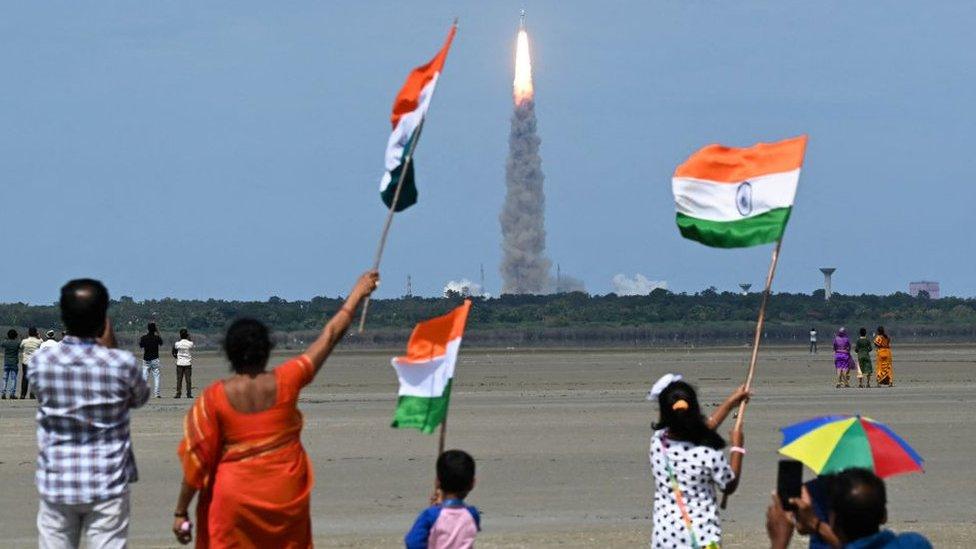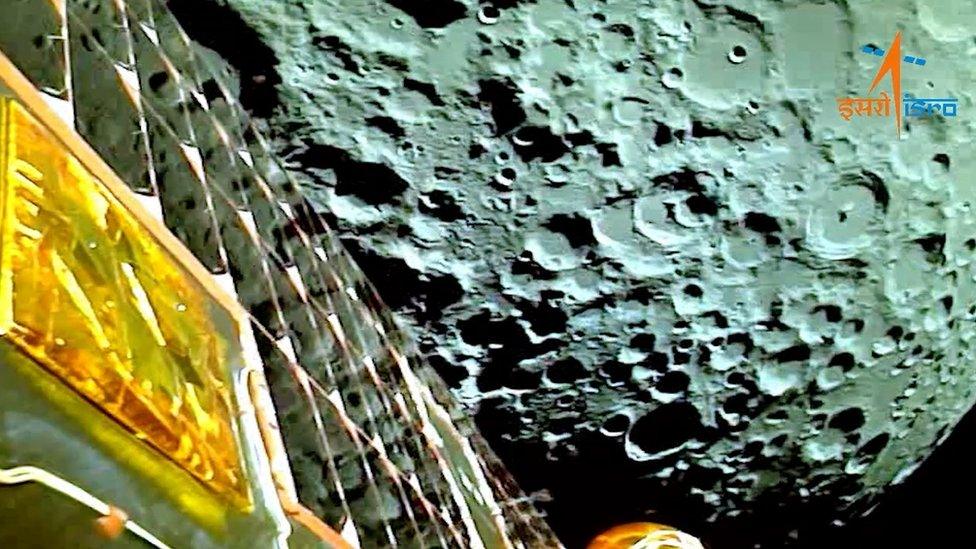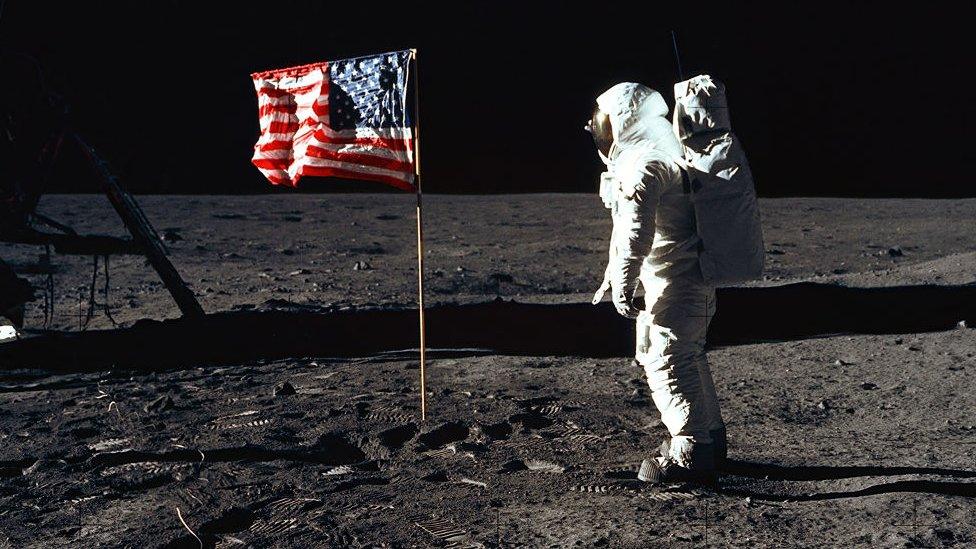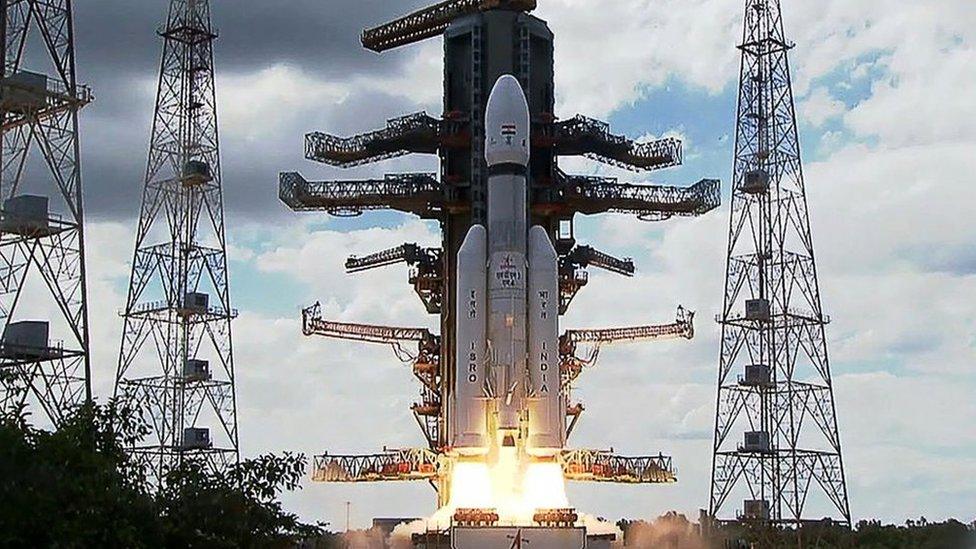Space race: Why do India and Russia want to land on the Moon?
- Published
- comments

People cheered on the blast-off from India's Satish Dhawan Space Centre in Sriharikota
Both India and Russia's space agencies tried to send unmanned missions to the Moon this summer.
They were heading to the lunar South Pole, which is a less explored part of the Moon.
But Russia's shuttle unfortunately crashed into the Moon's surface sometime on Saturday after spinning out of control.
Early reports suggest it has been so badly damaged it "has ceased to exist".
Watch the launch of Russia's first space mission to the Moon in 47 years
India's shuttle is still due to land on the Moon on 23 August.
The ISRO, India's space agency, previously said while the two missions were due to take place at the same time, it did not mean there was going to be another space race.

A series of images sent by Chandrayaan-3 show the craters on the lunar surface getting larger and larger as the spacecraft gets closer
Differences in approach
The two space agencies sent their missions into space in very different ways.
The ROSCOSMOS shuttle - Luna-25 - was launched on 10 August by a very powerful rocket. It blasted the shuttle through Earth's atmosphere, quickly entering the Moon's orbit.
It was expected to make history by being the first mission to carry out a soft landing at the lunar South Pole.
"Every space mission is very risky and highly technical. It's unfortunate that Luna-25 has crashed," a Russian spokesman told the BBC.
The ISRO sent Chandrayaan-3 off a little earlier - on 14 July - but it went around Earth a few times before entering lunar orbit on 5 August.
The ISRO's lander and rover is due to land on the Moon on 23 August. Had the ROSCOSMOS mission gone to plan, Luna-25 should have arrived one or two days earlier.
India's space agency is called the ISRO, which stands for the Indian Space Research Organisation.
Russia's space agency is called ROSCOSMOS.
What was the space race?
Learn about the history of explorations in space
Before it crashed, some people had described the ISRO and ROSCOSMOS' journeys to the Moon as another "space race", but what was that, and why is it important?
Starting in the 1950s and continuing into the 1960s, the US was in a technological race with the Soviet Union, known as the space race.
It took place during the Cold War when political tensions were high between the US and the Soviet Union.
The Soviet Union sent the first man into space - a man called Yuri Gagarin - in 1961. The US President at the time, John F Kennedy, responded the same year by sending an American man into space, and then launching the famous Apollo missions.
President Kennedy said he would have people on the moon by the end of the decade - which happened in 1969, with Neil Armstrong and Buzz Aldrin on the Apollo 11 mission.
You can learn more about the history of the space race, and the politics behind it, here.
How many people have set foot on the Moon?

Buzz Aldrin and Neil Armstrong put up a flag of the USA when they arrived up on the Moon. Can you spot their footprints in the ground?
After Neil Armstrong and Buzz Aldrin stepped out on the Moon, 10 more people would follow in their footsteps.
The last people to set foot on the moon were Gene Cernan and Harrison Schmitt in December 1972.
Sending manned missions to the Moon is very expensive, and one of the main reasons space agencies have not sent people back.
Robotic missions have been sent instead to explore the Moon using rovers.
Scientists believe there could be frozen water and precious elements on the Moon that might be useful to people back on Earth.
- Published14 July 2023

- Published4 October 2017

